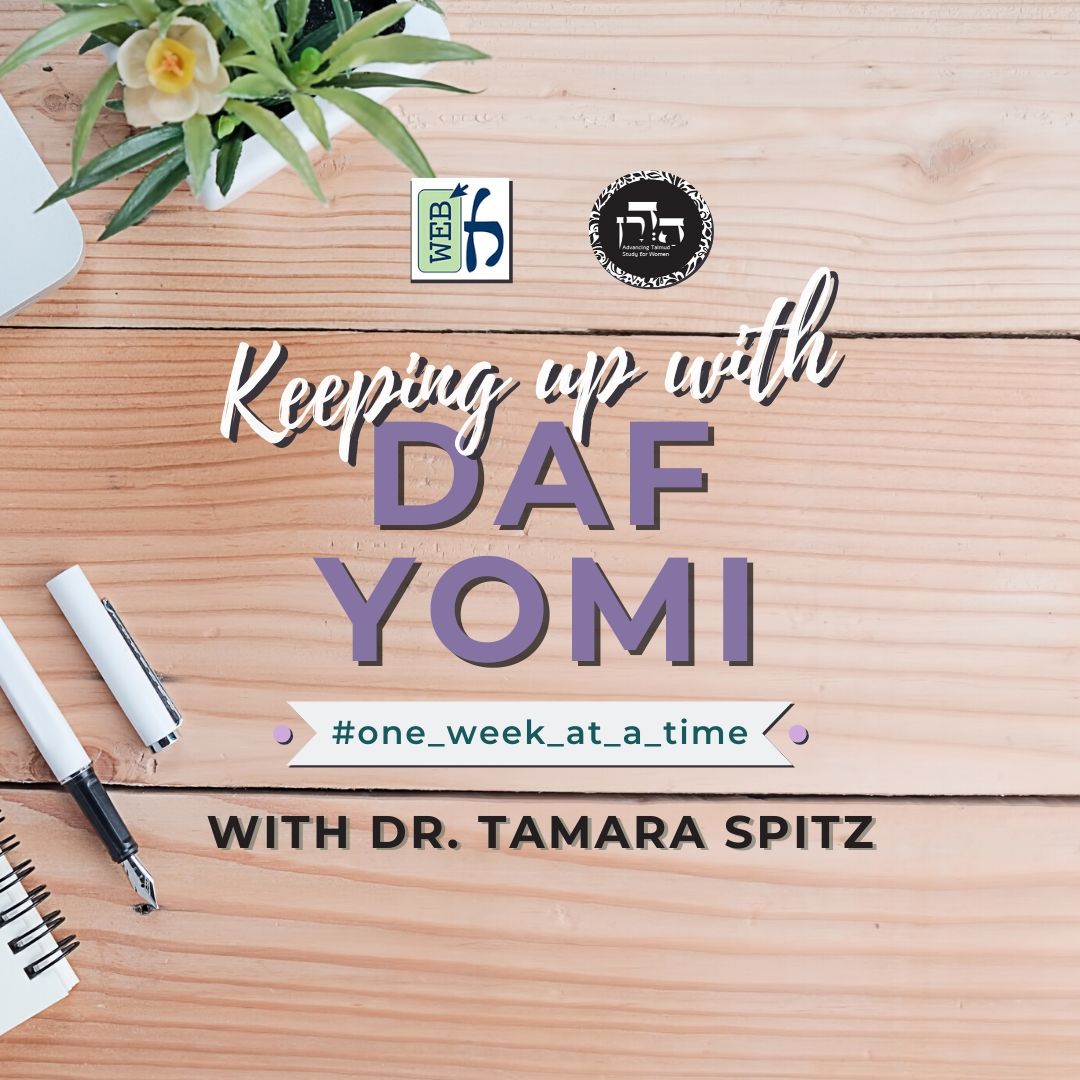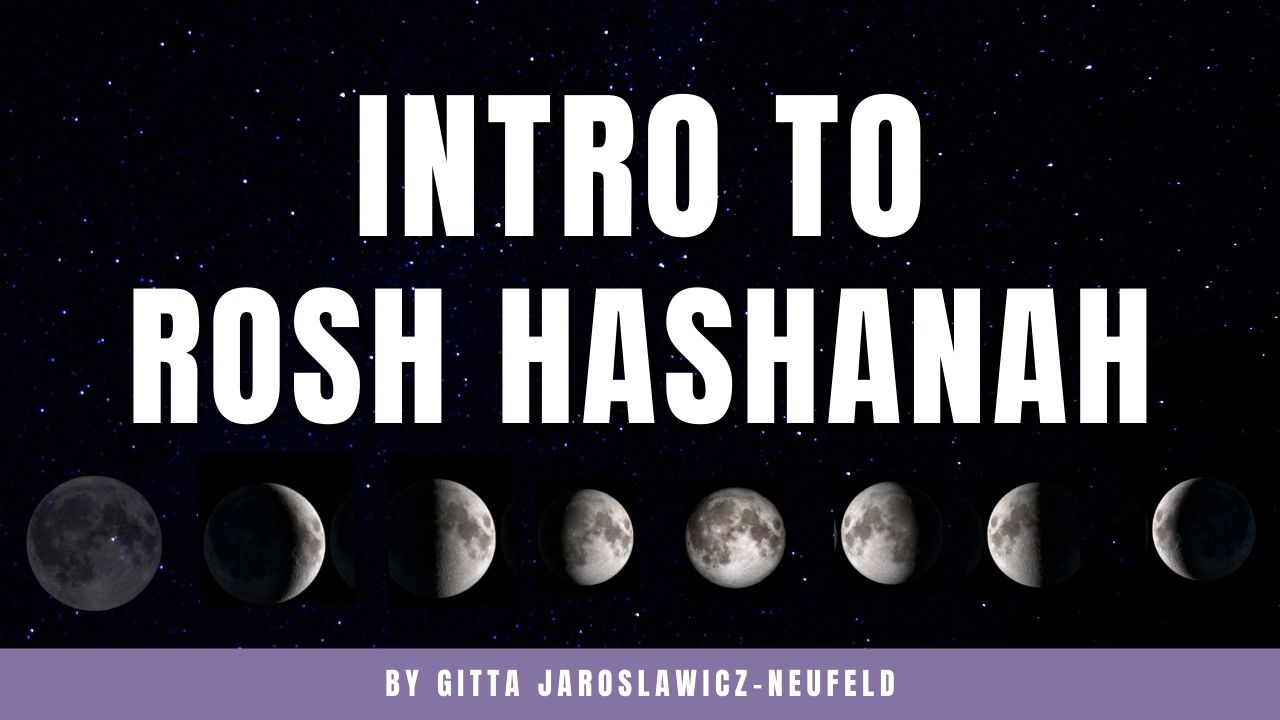Rosh Hashanah 10
וּפֵירוֹת נְטִיעָה זוֹ אֲסוּרִין עַד חֲמִשָּׁה עָשָׂר בִּשְׁבָט, אִם לְעׇרְלָה — עׇרְלָה, וְאִם לִרְבָעִי — רְבָעִי.
And if the planting, layering, or grafting took place more than thirty days before Rosh HaShana, the fruit of this planting is prohibited until the fifteenth of Shevat of the fourth year since the tree’s planting, even though the three years were already completed the previous Rosh HaShana. This principle applies both for orla during the year of orla, when it is prohibited to eat the fruit, and for fourth-year produce during the year of fourth-year produce, which must be eaten in Jerusalem or redeemed before it is eaten outside Jerusalem.
מְנָא הָנֵי מִילֵּי? אָמַר רַבִּי חִיָּיא בַּר אַבָּא אָמַר רַבִּי יוֹחָנָן, וּמָטוּ בָּהּ מִשְּׁמֵיהּ דְּרַבִּי יַנַּאי, אָמַר קְרָא: ״וּבַשָּׁנָה הָרְבִיעִית וּבַשָּׁנָה הַחֲמִישִׁית״.
The Gemara asks: From where are these matters derived, that the prohibitions of orla and fourth-year produce extend past Tishrei until the fifteenth of Shevat? Rabbi Ḥiyya bar Abba said that Rabbi Yoḥanan said, and some determined that it was stated in the name of Rabbi Yannai: The verse states: “Three years shall it be as prohibited to you; it shall not be eaten. And in the fourth year all its fruit shall be sacred for praise-giving to the Lord. And in the fifth year shall you eat of its fruit, that it may yield to you its increase; I am the Lord your God” (Leviticus 19:23–25).
פְּעָמִים שֶׁבָּרְבִיעִית וַעֲדַיִין אֲסוּרָה מִשּׁוּם עׇרְלָה, וּפְעָמִים שֶׁבַּחֲמִישִׁית וַעֲדַיִין אֲסוּרָה מִשּׁוּם רְבָעִי.
The baraita explains: The repetition of the word “and,” indicated by the conjunctive vav that joins these verses, teaches that there are times that the tree is already in its fourth year and yet the fruit is forbidden as orla, from the verses “three years…and in the fourth year”; and there are times that the tree is already in its fifth year and yet the fruit is forbidden as fourth-year produce, from the verses “in the fourth year…and in the fifth year.”
לֵימָא דְּלָא כְּרַבִּי מֵאִיר, דְּאִי רַבִּי מֵאִיר — הָא אָמַר: יוֹם אֶחָד בַּשָּׁנָה חָשׁוּב שָׁנָה. דְּתַנְיָא: פַּר הָאָמוּר בַּתּוֹרָה סְתָם — בֶּן עֶשְׂרִים וְאַרְבָּעָה חֹדֶשׁ וְיוֹם אֶחָד. דִּבְרֵי רַבִּי מֵאִיר.
The Gemara suggests: Let us say that this baraita is not in accordance with the opinion of Rabbi Meir, as, if it were in accordance with the opinion of Rabbi Meir, didn’t Rabbi Meir say that even one day in a year is considered a year? As it is taught in a baraita: The term bullock [par] mentioned in the Torah without specification is referring to a bullock that is twenty-four months and one day old, as although it is known by tradition that a bullock is three years old, once it is one day into its third year, it is already considered three years old; this is the statement of Rabbi Meir.
רַבִּי אֶלְעָזָר אוֹמֵר: בֶּן עֶשְׂרִים וְאַרְבָּעָה חֹדֶשׁ וּשְׁלֹשִׁים יוֹם. שֶׁהָיָה רַבִּי מֵאִיר אוֹמֵר: כׇּל מָקוֹם שֶׁנֶּאֱמַר עֵגֶל בַּתּוֹרָה סְתָם — בֶּן שָׁנָה, ״בֶּן בָּקָר״ — בֶּן שְׁתַּיִם, ״פַּר״ — בֶּן שָׁלֹשׁ.
The baraita continues: Rabbi Elazar says: The term bullock is referring to an animal that is twenty-four months and thirty days old. As Rabbi Meir would say: Wherever a calf [egel] is stated in the Torah without specification, the reference is to a calf that is one year old; a young ox [ben bakar] is referring to a cow that is two years old; and a bullock is referring to a cow that is three years old. Since the baraita dealing with planting requires that the tree be planted thirty days before Rosh HaShana, rather than one day, it would seem that it is not in accordance with the opinion of Rabbi Meir.
אֲפִילּוּ תֵּימָא רַבִּי מֵאִיר, כִּי קָאָמַר רַבִּי מֵאִיר יוֹם אֶחָד בַּשָּׁנָה חָשׁוּב שָׁנָה — בְּסוֹף שָׁנָה, אֲבָל בִּתְחִלַּת שָׁנָה — לָא.
The Gemara rejects this argument: Even if you say that the baraita is in accordance with the opinion of Rabbi Meir, it can be explained as follows. When Rabbi Meir said that one day in a year is considered a full year, this is only when the day is at the end of the year; since the count of a new year is about to begin, the day is considered like a whole year. But if the day is at the beginning of the year, that one day is not considered like a whole year.
אָמַר רָבָא: וְלָאו קַל וָחוֹמֶר הוּא? וּמָה נִדָּה, שֶׁאֵין תְּחִילַּת הַיּוֹם עוֹלָה לָהּ בְּסוֹפָהּ — סוֹף הַיּוֹם עוֹלֶה לָהּ בִּתְחִלָּתָהּ. שָׁנָה, שֶׁיּוֹם אֶחָד עוֹלֶה לָהּ בְּסוֹפָהּ —
Against this claim Rava said: But can we not invoke an a fortiori argument to prove just the opposite? Whereas in the case of a menstruating woman, where the beginning of the day is not counted as a full day at the end of her seven-day period of ritual impurity and instead she must wait until the end of the seventh day and immerse in a ritual bath only in the evening, yet nevertheless the end of the day is counted as a full day at the beginning of her ritually impure period, since if she experienced bleeding shortly before sunset that day is considered as the first day of her seven-day period of impurity; if so, in the case of a year, where one day is counted as a full year at the end of the year,
אֵינוֹ דִּין שֶׁיּוֹם אֶחָד עוֹלֶה בִּתְחִלָּתָהּ?
is it not right that one day should count as a full year at the beginning of the year?
וְאֶלָּא מַאי — רַבִּי אֶלְעָזָר? שְׁלֹשִׁים וּשְׁלֹשִׁים בָּעֵי! דִּתְנַן: אֵין נוֹטְעִין וְאֵין מַבְרִיכִין וְאֵין מַרְכִּיבִין עֶרֶב שְׁבִיעִית פָּחוֹת מִשְּׁלֹשִׁים יוֹם לִפְנֵי רֹאשׁ הַשָּׁנָה, וְאִם נָטַע וְהִבְרִיךְ וְהִרְכִּיב — יַעֲקוֹר, דִּבְרֵי רַבִּי אֶלְעָזָר. רַבִּי יְהוּדָה אוֹמֵר: כׇּל הַרְכָּבָה שֶׁאֵינָהּ קוֹלֶטֶת בִּשְׁלֹשָׁה יָמִים — שׁוּב אֵינָהּ קוֹלֶטֶת. רַבִּי יוֹסֵי וְרַבִּי שִׁמְעוֹן אוֹמְרִים: שְׁתֵּי שַׁבָּתוֹת.
Rather, what opinion does it follow? If the baraita was not taught in accordance with the opinion of Rabbi Meir, does it follow the opinion of Rabbi Elazar, who holds that only thirty days are considered like a year? If so, then thirty days and another thirty days are required: Thirty days for the planting to take root, and another thirty days to count as a year. As we learned in a mishna: One may not plant, layer, or graft trees on the eve of the Sabbatical Year less than thirty days before Rosh HaShana, and if one planted, layered, or grafted, he must uproot it, as the planting will take root only in the seventh year; this is the statement of Rabbi Elazar. Rabbi Yehuda says: Any grafting that does not take root within three days will never take root. Rabbi Yosei and Rabbi Shimon say: Two weeks are needed for the planting to take root.
וְאָמַר רַב נַחְמָן אָמַר רַבָּה בַּר אֲבוּהּ: לְדִבְרֵי הָאוֹמֵר שְׁלֹשִׁים — צָרִיךְ שְׁלֹשִׁים וּשְׁלֹשִׁים, לְדִבְרֵי הָאוֹמֵר שְׁלֹשָׁה — צָרִיךְ שְׁלֹשָׁה וּשְׁלֹשִׁים, לְדִבְרֵי הָאוֹמֵר שְׁתֵּי שַׁבָּתוֹת — צָרִיךְ שְׁתֵּי שַׁבָּתוֹת וּשְׁלֹשִׁים יוֹם. וְאִי נָמֵי, כְּרַבִּי יְהוּדָה סְבִירָא לֵיהּ — שְׁלֹשָׁה וּשְׁלֹשִׁים בָּעֵי!
And on this topic Rav Naḥman said that Rabba bar Avuh said: According to the statement of the one who says thirty days, this means that it requires thirty days for the planting to take root and another thirty days to count as a year. And according to the statement of the one who says three days, this means that it requires thirty-three days. And according to the statement of the one who says two weeks, this means that it requires two weeks for the planting to take root and another thirty days to count as a year. And if the tanna of the mishna holds in accordance with the opinion of Rabbi Yehuda that only three days are needed for the planting to take root, it still requires three days for the planting to take root and thirty days to count as a year. If so, the baraita cannot be understood even in accordance with the opinion of Rabbi Elazar.
אֶלָּא לְעוֹלָם רַבִּי מֵאִיר, וְכִי קָאָמַר שְׁלֹשִׁים — לִקְלִיטָה.
Rather, it must be understood as follows: The baraita was actually taught in accordance with the opinion of Rabbi Meir, and when it says thirty days, it is referring to the time needed for the planting to take root.
אִי הָכִי, שְׁלֹשִׁים וְאֶחָד בָּעֵי! קָא סָבַר: יוֹם שְׁלֹשִׁים עוֹלֶה לְכָאן וּלְכָאן.
The Gemara raises a difficulty: If so, it requires thirty-one days; thirty days for the planting to take root and one more day to count as a year. The Gemara answers: This is theoretically correct, but he holds that the thirtieth day is counted for here and for there, i.e., it counts as both the thirtieth day for taking root and as a day that is counted as a year.
אָמַר רַבִּי יוֹחָנָן, וּשְׁנֵיהֶן מִקְרָא אֶחָד דָּרְשׁוּ: ״וַיְהִי בְּאַחַת וְשֵׁשׁ מֵאוֹת שָׁנָה בָּרִאשׁוֹן בְּאֶחָד לְחֹדֶשׁ״, רַבִּי מֵאִיר סָבַר: מִדְּאַכַּתִּי יוֹם אֶחָד הוּא דְּעָיֵיל בַּשָּׁנָה וְקָא קָרֵי לַהּ שָׁנָה, שְׁמַע מִינַּהּ: יוֹם אֶחָד בַּשָּׁנָה חָשׁוּב שָׁנָה.
Rabbi Yoḥanan said: And both of them, Rabbi Meir and Rabbi Elazar, who disagree about how much time must pass to count as a year, expounded the same verse. As the verse states: “And it came to pass in the one and six hundredth year, in the first month on the first day of the month, that the waters were dried up from off the earth” (Genesis 8:13). Rabbi Meir holds: From the fact that it was only one day into the year, as it was still the first day of the first month, and yet it is called the six hundred and first year, learn from here that one day in a year is already considered a year.
וְאִידַּךְ: אִי כְּתִיב בְּ״שֵׁשׁ מֵאוֹת וְאַחַת שָׁנָה״ — כִּדְקָאָמְרַתְּ. הַשְׁתָּא דִּכְתִיב ״בְּאַחַת וְשֵׁשׁ מֵאוֹת שָׁנָה״, ״שָׁנָה״ אַ״שֵּׁשׁ מֵאוֹת״ קָאֵי. וּמַאי ״אַחַת״ — אַתְחַלְתָּא דְּאַחַת קָאָמַר.
And the other tanna, Rabbi Elazar, expounds the verse as follows. If it had written: In the six hundred and first year, it would be as you said. However, now that it is written: “In the one and six hundredth year,” I can say that the word “year” relates to “six hundredth,” thereby teaching that it is still considered the six hundredth year. And what is meant by “one”? That it is the beginning of one year, but not that the first day counts as a year.
וְרַבִּי אֶלְעָזָר מַאי טַעְמָא? דִּכְתִיב: ״בָּרִאשׁוֹן בְּאֶחָד לַחֹדֶשׁ״, מִדְּאַכַּתִּי יוֹם אֶחָד הוּא דְּעָיֵיל בַּחֹדֶשׁ וְקָא קָרֵי לֵיהּ חֹדֶשׁ — שְׁמַע מִינַּהּ: יוֹם אֶחָד בַּחֹדֶשׁ חָשׁוּב חֹדֶשׁ, וּמִדְּיוֹם אֶחָד בַּחֹדֶשׁ חָשׁוּב חֹדֶשׁ — שְׁלֹשִׁים יוֹם בַּשָּׁנָה חֲשׁוּבִין שָׁנָה. וְחֹדֶשׁ לִמְנוּיָיו, וְשָׁנָה לִמְנוּיֶיהָ.
The Gemara asks: And with regard to Rabbi Elazar, what is the rationale for his opinion? From where does he learn that thirty days are counted as a year? As it is written: “In the first month on the first day of the month.” Since it was only one day into the month, and yet it is called a month, learn from here that one day in a month is already considered a month. And since one day in a month is already considered a month, likewise thirty days in a year are already considered a year, as a month is calculated according to its unit, and a year is calculated according to its unit. If one unit by which a month is calculated, i.e., a day, counts as a full month, so too, one unit by which a year is calculated, i.e., a month, counts as a full year.
מִכְּלַל דְּתַרְוַיְיהוּ סְבִירָא לְהוּ בְּנִיסָן נִבְרָא הָעוֹלָם.
§ The Gemara comments: By inference, both of them, Rabbi Meir and Rabbi Elazar, hold that the world was created in Nisan and that the years are counted from that month, as, if the world were created in Tishrei and the count started then, the first day of the first month of the six hundred and first year would already have been six months into the year for the purpose of counting years.
תַּנְיָא, רַבִּי אֱלִיעֶזֶר אוֹמֵר: בְּתִשְׁרִי נִבְרָא הָעוֹלָם, בְּתִשְׁרִי נוֹלְדוּ אָבוֹת, בְּתִשְׁרִי מֵתוּ אָבוֹת, בַּפֶּסַח נוֹלַד יִצְחָק, בְּרֹאשׁ הַשָּׁנָה נִפְקְדָה שָׂרָה רָחֵל וְחַנָּה, בְּרֹאשׁ הַשָּׁנָה יָצָא יוֹסֵף מִבֵּית הָאֲסוּרִין.
It is taught in a baraita that the tanna’im disagreed about this point: Rabbi Eliezer says: In Tishrei the world was created; in Tishrei the Patriarchs were born; in Tishrei the Patriarchs died; on Passover Isaac was born; on Rosh HaShana Sarah, Rachel, and Hannah were remembered by God and conceived; on Rosh HaShana Joseph came out from prison;























